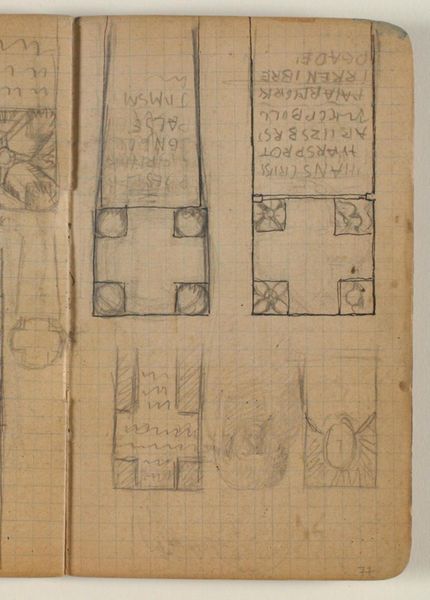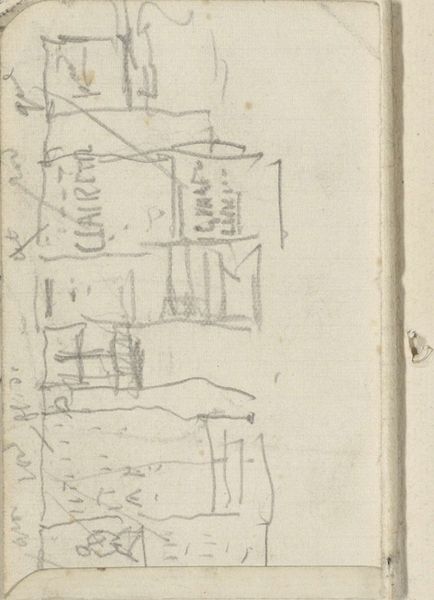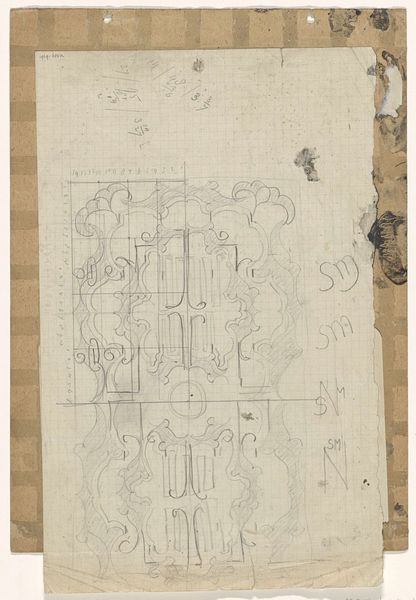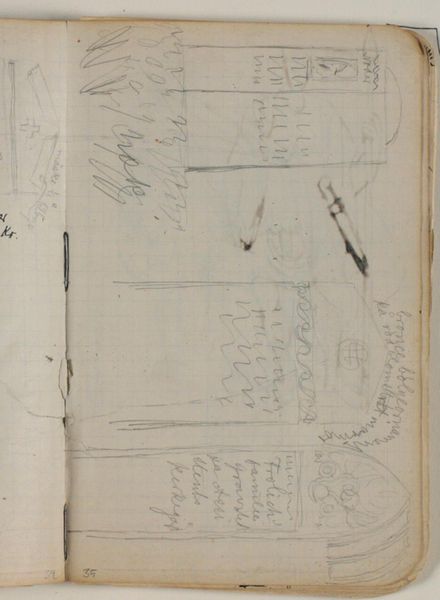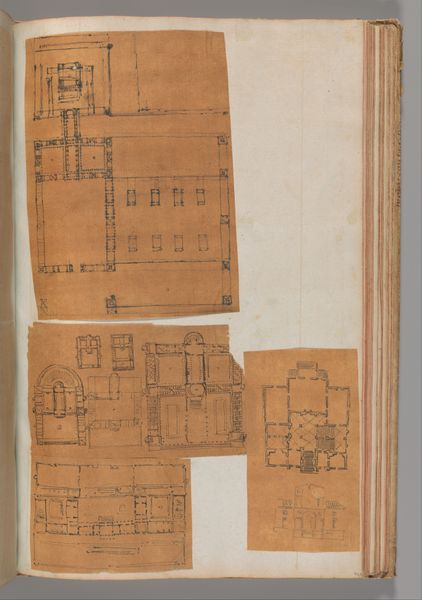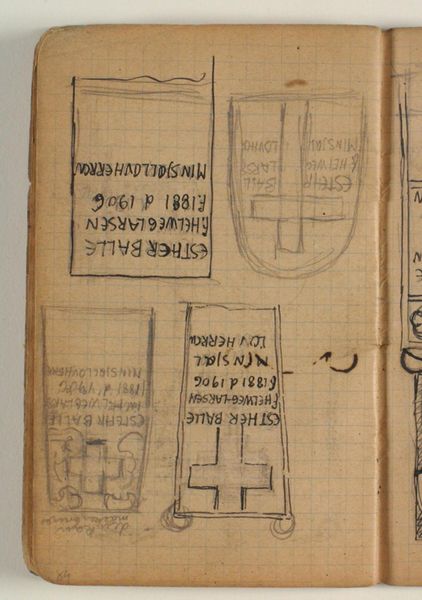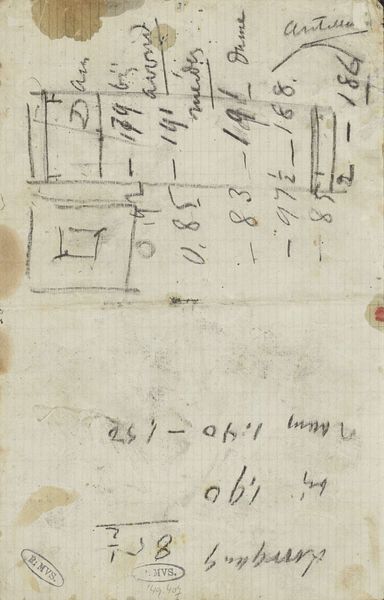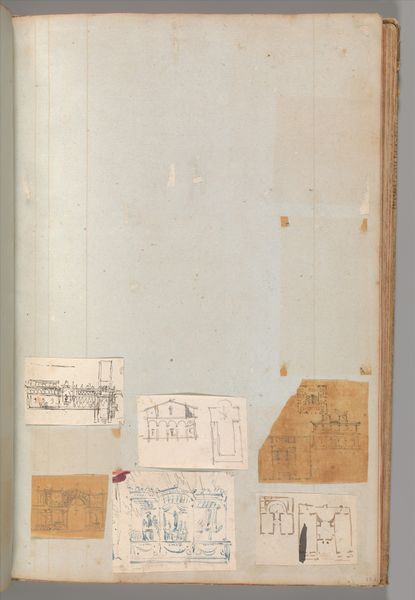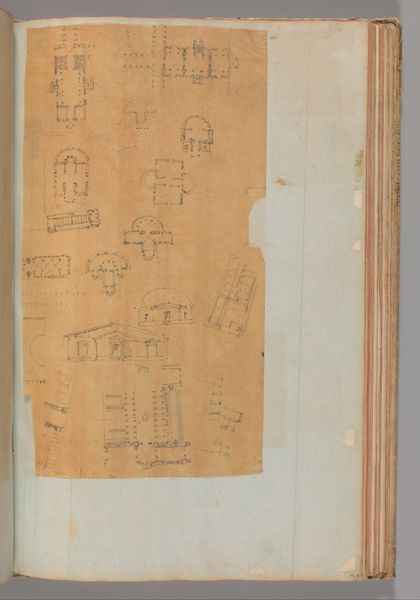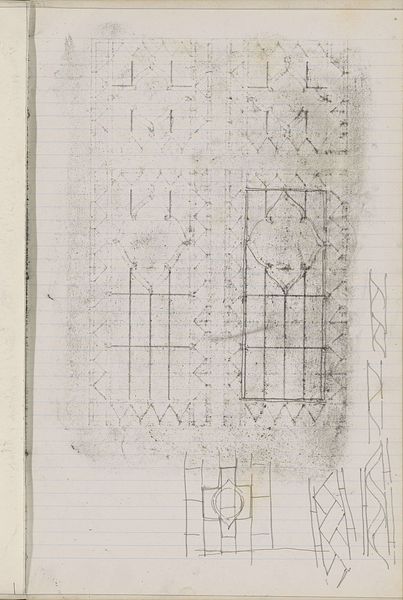
drawing, paper, pencil
#
portrait
#
drawing
#
paper
#
pencil
#
northern-renaissance
Dimensions: 163 mm (height) x 97 mm (width) (bladmaal)
Curator: Editor: This is "Udkast til Ester Balles gravm\u00e6le," a pencil drawing on paper from 1906 by Niels Larsen Stevns. It's currently at the SMK. It looks like a design for a tombstone. What stands out to you? Curator: It's interesting to see this as a commodity; a designed object, and I immediately think about the labor involved. The artist's hand is present in the quick pencil strokes on the squared paper. Who was Ester Balle, and how might the tombstone's design speak to her social standing and her family's wealth? The act of commemorating the dead involved significant resources, commissioning art, materials, production, inscription, and finally placement. The rough paper and the nature of pencil drawing emphasize the cost, value, and physical components needed for this task. Editor: That's a great point. It brings the process of grief into a material world. Looking closer, the drawing's grid suggests it was precisely scaled. Why would a tombstone need this attention to measurement, especially in 1906? Curator: Precisely! Consider the craftspeople who'd eventually work with stone, based on these plans. The design isn't just the artist's vision; it's a set of instructions, a guide for skilled labor. How might the Northern Renaissance style be tied to notions of craftsmanship and artistry during the time of the Danish Golden Age and after? Editor: It reframes the tombstone from a static symbol to an end result. It forces me to appreciate the relationship between a sketch, artistic choice, and labor. Curator: Exactly. It transforms this memento mori into a living reminder of artistic, physical, and cultural production. Editor: Thanks. I see the drawing not just as a portrait in planning, but more like a confluence of effort, status, and tangible resources. Curator: Precisely. And it brings awareness to the material realities of art.
Comments
No comments
Be the first to comment and join the conversation on the ultimate creative platform.
